1. Introduction
In recent times, as the digital economy has evolved, the elements of data and technology have steadily blended, and the in-depth analysis of big data has greatly aided the advancement of artificial intelligence technology. At the same time, AI technology has also changed the traditional means of economic analysis to a large extent, and its use is no longer dominated by human consciousness, but is based on objective factors - such as the political context, technological dimensions, social advancement, etc. - to build effective analytical models that are used to predict the future direction of the economy. As a result of the introduction of AI technology, social productivity, and production efficiency have increased significantly. Simultaneously, the influence of AI technology on the digital economy market has grown, as seen by both the digital transformation of industries and the advancement of digital industrialization. This paper unfolds based on the definitions of the two concepts of the digital economy delineated by the China Academy of Information and Communication Research (CAICR) [1]. While industrial digitization refers to the integration of digital technologies into conventional industries with the goal of enhancing service quality, innovation capability, and production efficacy, digital industrialization, or the information and communication industry, encompasses the digital infrastructure, innovative technology-based technology products, related product services, and remedies required for the advancement of the digital economy, etc. Although there are many economists studying the advancement of the digital economy in the context of artificial intelligence and big data, most of these studies focus on the digital industrialization aspect, bypassing the problems of the industrial digital transformation process.
The synergistic relationship between digital industrialization and industrial digital advancement is receiving more attention from scholars in the context of the interaction between AI big data analytics and digital economic advancement. For example, Ho Da’an pointed out in his study that due to the interaction between digital industrialization and industrial digitization, when we study the advancement of the digital economy, we should not ignore the impact of the correlation between the two on the digital alternation of enterprises and the progression throughout time of the digital economy [2]. Wang Juanjuan also proposed in her study that after 2015, digital industrialization and industrial digitization gradually shifted from coordinated to uncoordinated advancement in China, and the broader advancement of industrial digitization increased the difficulty of conducting regional economic coordination in China [3]. In addition, Wang Dexiang and Wang Jianbo illustrated in their study that the impact of AI on industrial digitization may be divided into two different dimensions, one is that the industry itself already exists and is more mature, and the impact of AI technology on this type of industry is mainly embodied in the improvement of productivity; the second dimension is that the industry itself did not exist before the advancement of AI technology, and with the gradual maturation of AI, the industry was born, and a more complete industrial chain was formed. and a more complete industry chain was formed [4]. However, this article still analyzes digital industrialization and industrial digitization as two independent factors and does not explore the relationship between them in depth. At the same time, the rest of the articles do not study the reasons for the different regional advancement of industrial digitization and digital industrialization based on the correlation between industrial digitization and digital industrialization.
Due to the above problems, this paper will try to discover and explain the possible reasons and influencing factors of different digital economic advancement from different perspectives by elaborating and comparing the history and current status of industrial digitization and digital industrialization advancement in three different economies, namely, China and Japan, in the context of East Asia, so as to further study the impact of the synergistic relationship between industrial digitization and digital industrialization on the advancement of the digital economy.
2. Methodology
The current survey includes calculations of the share of industry digitization scale in the digital economy and the share of digital economy scale in GDP, and then compares and analyzes the data from each country with the global data. In addition, there are also comparisons and analyses of the data on the size of the digital economy, industrial digitization, and digital industrialization in each country, as well as their growth. These data come from official sources, such as the white paper on China's digital economy advancement and are often used to analyze trends in economic advancement.
In total, data from two countries, China and Japan, were collected and then analyzed using descriptive analysis and other analytical methods to analyze several important indicators mentioned above. The sources of these data were accurate and reliable, and some useless information in the data was processed in advance before using the data. The data are carefully categorized by year, region, and industry type, which makes it easy to analyze and elaborate on the meaning of the data from both the industry dimension and the time dimension. In addition, the data analysis methods used in this paper are scientific and reliable and have been used and verified by scholars for many years. Descriptive analysis is a basic and reliable method of data analysis, and the text illustrates the state of advancement of digital industrialization by comparing the means of each data. These analytical methods may be difficult to operate due to computational errors, but the resulting effect is negligible after the comparison eliminates these erroneous data. Moreover, this paper uses standardized formulas for the digital scale of China's computing industry, the scale of digital industrialization, and the scale of the digital economy, namely:
(1) Digital industrialization scale = electronic information manufacturing sector added value revenue + software and information technology services sector added value revenue + the telecommunications sector added value revenue + Internet industry added value revenue.
(2) Industry digitization scale = the primary sector added value + secondary sector added value + tertiary sector added value.
(3) Digital economy scale = digital industrialization scale + industrial digitization scale.
In addition, due to the different indicators used by different countries to measure the scale of the digital economy, the scale of industrial digitization and digital industrialization, and the differences in the way of calculation as well as the way of expression, it is not possible to find exactly the same indicators in the officially released data and survey documents, and this paper will measure and analyze the advancement of the digital economy in China and Japan through different data.
3. Result
Previous research has demonstrated that the digital economy in China is rapidly growing and rising in scope. Simultaneously, the widespread adoption of digital technology has narrowed the regional disparity in people's living standards. As a consequence, digital industrialization promotes regional coordinated advancement, whereas industrial digitization inhibits regional concerted growth. However, in 2020, the scale of industrial digitization in China accounted for 80.9% and showed an upward trend, that is to say, industrial digitization has become the top priority of China's economic advancement, and the proportion of industrial digitization in the digital economy fluctuated around 82%. For example, in 2022, the volume of digital industrialization in China reached 9.2 trillion yuan, representing 7.6% of GDP and 18.3% of the digital economy, with a nominal growth rate of 10.3% year on year. The scale of industrial digitization reached 41 trillion yuan, up 10.3% year on year in nominal terms, accounting for 33.9% of GDP and 81.7% of the digital economy [3], as shown in Figure 1.
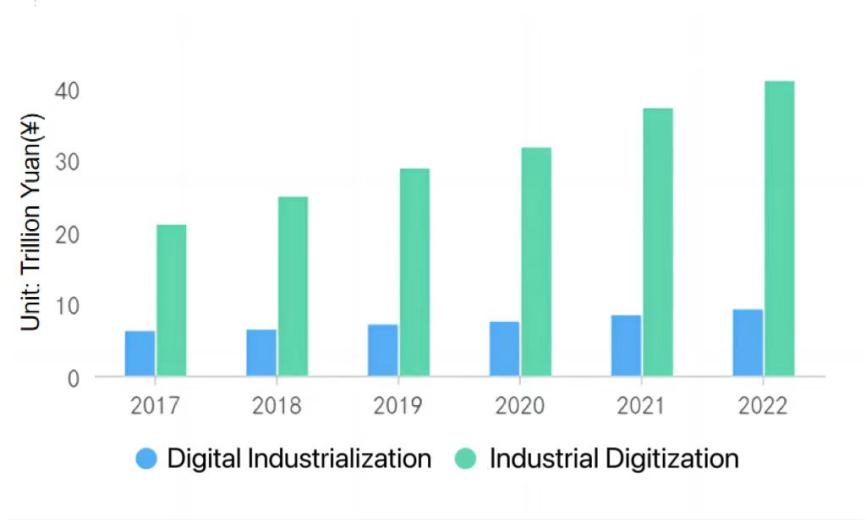
Figure 1: Scale of Industrial Digitization vs. Digital Industrialization in China, 2017 to 2022
In addition, the scale of industrial digitization in developed countries accounts for more than 90% of the scale of the digital economy, while the world average is 84.3%, indicating that the further advancement of industrial digitization is an inevitable trend in Chin. For Japan, which is affected by the bubble economy and has long-term economic stagnation, which further leads to the aging of the population, the advancement of the digital economy is also an urgent need. According to the report, the value-added scale of Japan's digital industry in 2015 was 37.4 trillion yen, accounting for only 7% of gross domestic product (GDP). In 2021, the White Paper on Japan's Manufacturing Industry released by Japan also proposed that in order to cope with the uncertain domestic and international situation changes, the digital transformation of enterprises and industries should be continuously deepened. That is to say, the Japanese government also puts the main focus on the advancement of industrial digitization [5].
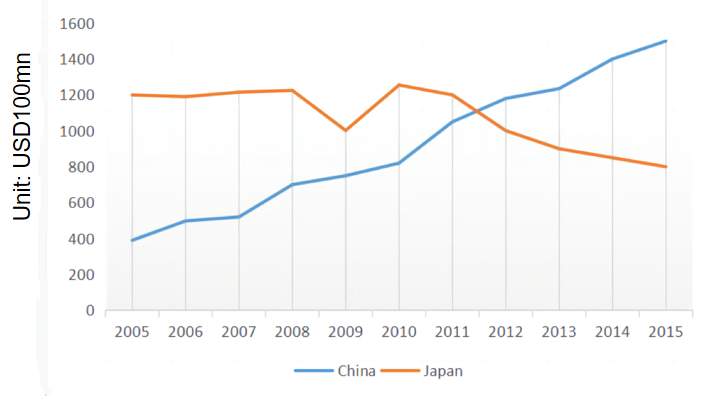
Figure 2: Scale of value-added in the manufacturing of computer, electronic and optical products in China and Japan
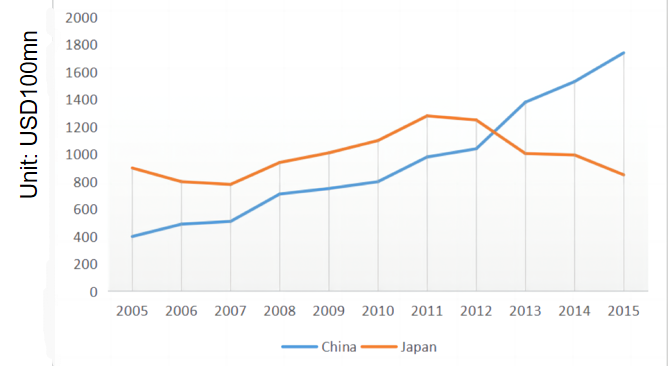
Figure 3: Scale of value-added in the telecommunictation sector in China and Japan
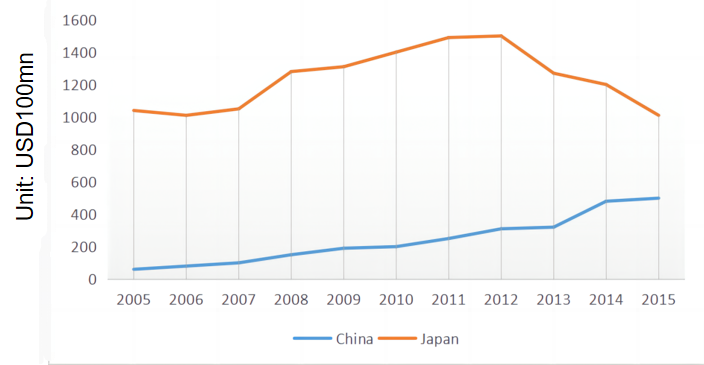
Figure 4: Scale of value-added in the IT and information service industry in China and Japan
According to the calculation formula of the digital industrialization scale, we can compare the advancement pattern of the digital industrialization scale in China and Japan based on the statistics presented above. In the line chart, the scale of the three industries in Japan had an inflection point around 2011 and 2012, which changed from rising to declining. It was also around 2011 to 2013 that the added value scale of Japan's computer, electronic and optical product manufacturing sector and the added value scale of the telecommunications sector both declined significantly [6], as shown in Figure 2 and Figure 3. That is to say, the above digital economy industries in Japan did not develop well or even regress due to the impact of the domestic economic environment during these years. According to the data from Japan's Information and Communication White Paper in 2017, the nominal production of Japan's information and communication-related manufacturing industry reached a record high of 116.6 trillion yen in 2000. However, since then, due to the collapse of the IT bubble, the general advancement showed a decreasing trend, reaching the lowest value in 2005 and 113.8 trillion yen in 2007. However, it dropped to 98.9 trillion yen in 2009 due to the impact of the Lehman Brothers crisis in 2008-09. After 2010, the decline continued, and in 2012, it dropped to 89.9 trillion yen, which is in line with the conclusion drawn from the above table [7].
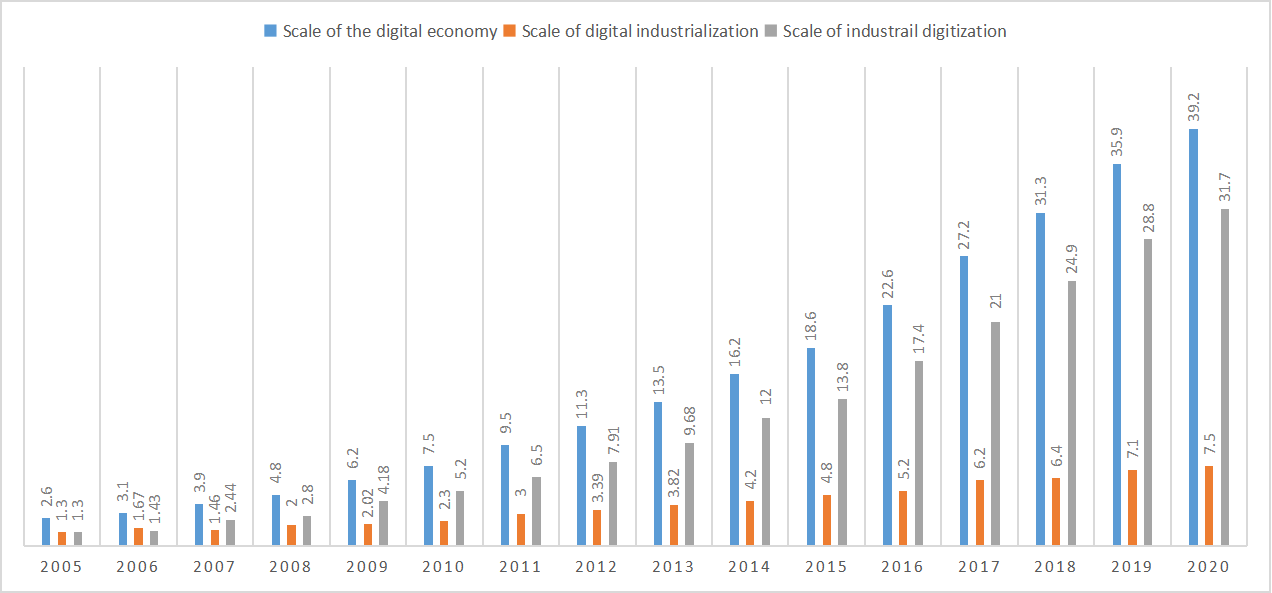
Figure 5: The state of China’s digital economy
The data shows that China's scale-added value in the above three industries has been increasing in a positive proportion since 2005, which is in line with the growing trend of China's digital economy in recent times, as shown in Figure 5. At the same time, it can also be seen from the table below that although the scale of China's digital industrialization is growing under the background of the growing scale of the digital economy, its proportion in the scale of the digital economy has been decreasing year by year. For example, in 2020, the scale of digital industrialization accounted for about 19.1% of the scale of the digital economy, while the scale of industrial digitization accounted for 80.9% of the scale of the digital economy [8].
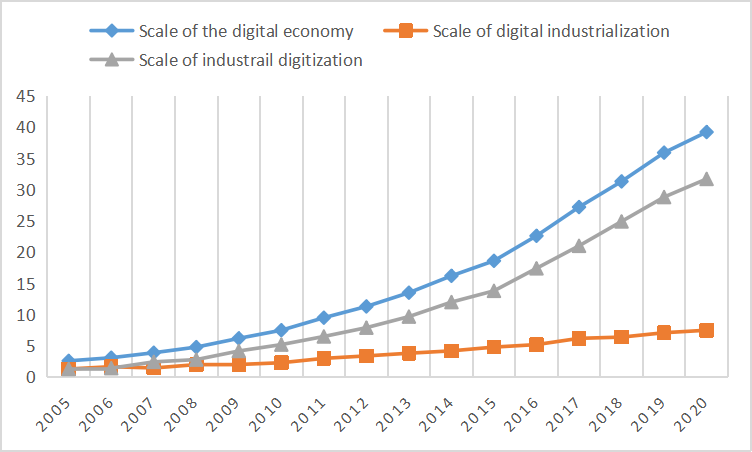
Figure 6: The state of China’s digital economy
In addition, under the background of the growing scale of the digital economy, the growth rate of the industrial digitization scale is significantly higher than that of the digital industrialization scale (Figure 6), which can also support the conclusion that the advancement of industrial digitization and digital industrialization in China is not balanced. However, in this context, the growth rate of the scale of the digital economy continues to rise with the soaring scale of industrial digitization, and the advancement rate is even slightly higher than the scale of industrial digitization. Perhaps we can speculate based on the above data that the unbalanced advancement of industrial digitization and digital industrialization has not caused a negative influence on the advancement of China's digital economy at present. Concurrently, we can also speculate that the advancement of China's digital industrialization has a significant inspiring and facilitating effect on the initial progress of industrial digitization. For instance, from 2005 to 2006, the scale of China's digital industrialization and added value were higher than that of industrial digitization and its added value.
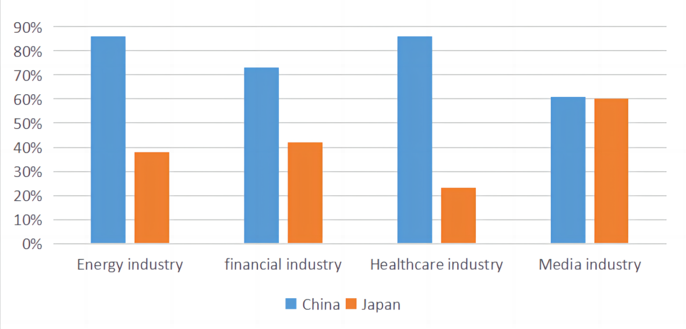
Figure 7: Ratio of Chinese and Japanese use of AI technology in energy, finance, healthcare, and media sectors
By comparing the conclusions obtained from the above analysis, we can find that although Japan's advancements in the sphere of digital economics started earlier than China's, due to the influence of the domestic economic environment, Japan's subsequent advancement rate in the process of digital industrialization is lower than China's. However, can we say that Japan has achieved a balanced advancement of industrial digitization and digital industrialization in the process of developing a digital economy? The answer is no. According to the Sixth (2021-2025) Science and Technology Basic Plan released by the Japanese government in 2021, Japan still has problems such as low research and innovation capacity and slow digital advancement. On the other hand, the use of emerging technologies such as artificial intelligence in Japanese industries lags behind that of China. According to the White Paper on Information and Communication, China's use of AI technology in energy, finance, healthcare, and media has reached 86, 73 %, 86 %, and 61 %, respectively, while Japan's adoption of AI technology in these fields is only 38 %, 42 %, 23 %, and 60 % [9]. In other words, Japan lags behind China in the advancement of industrial digitization (Figure 7).
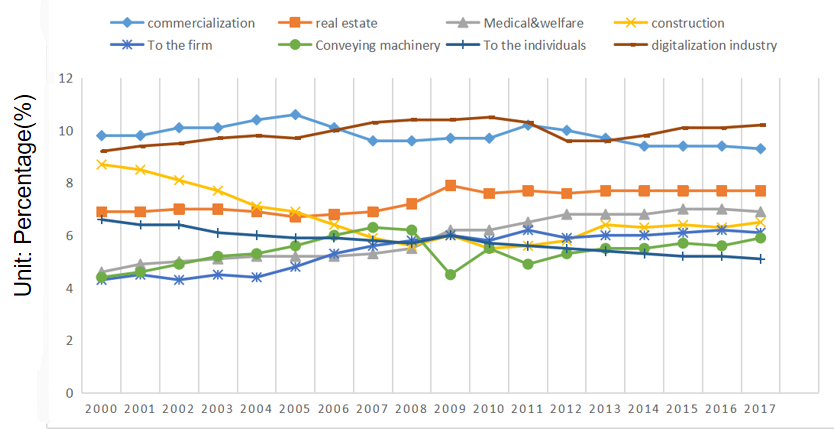
Figure 8: Information and communication industry and general industry as a percentage of real domestic production output
From the above data (Figure 8), it can be seen that the information and communication industry have a relatively high share of Japan's industry. From 2006 to 2011, it developed more than the commerce industry and reached first place among the domestic industries. However, from 2011 to 2013, it showed a downward trend and ranked below the commerce industry. It did not recover until 2014 and regained first place [10]. This trend is in line with the conclusions obtained in the previous analysis. At the same time, Japan's digital infrastructure business has a value addition of 30.5 trillion-yen, accounting for more than 80% of the overall added value of the digital economy [11]. Specifically, it includes manufacturing, such as electronic equipment, communication equipment and electronic computers, the telecommunication industry, and the software industry. The remaining 20%, with an added value of about 7 trillion yen, is mainly distributed among platform companies, such as Google, Yahoo!, Amazon, and the Japanese second-hand website Mercari. Data from the National Bureau of Statistics of China show that, relatively, in the internal structure of China's digital industrialization, the proportion of the software industry and Internet industry has bucked the trend and increased to more than 60%. Since 2014, the Internet industry has maintained a proportion of about 10%, while the software industry has a fast growth rate, and the proportion of the manufacturing industry has dropped from 50% to about 20%. At the same time, some studies have pointed out that China has developed the world's leading digital platform enterprises. Still, Japan has not developed similar enterprises, which leads to Japan may become the subsidiary processor of these digital platform enterprises [8]. Accordingly, Japan is still in the advancement stage of electronic manufacturing and has not reached the stage of developing a digital information platform in the process of digital industrialization. Japan's digital industrialization advancement process has a long way to go. At the same time, the previous data also shows that Japan has a greater advantage in the advancement of information services, but the growth value of the electronic manufacturing industry shows a downward trend, but the main force of the advancement of Japan's digital industrialization is still the electronic manufacturing industry. (Figure 4) Accordingly, the uneven advancement of digital industrialization may lead to the slow advancement of Japan's digital industrialization.
4. Conclusion
Prior studies have tended to look at industrial digitization and digital industrialization as two separate aspects to be studied, and have not explored the function of their relationship in the advancement of the scale of the digital economy. In addition, few have analyzed the advancement of the digital economy in Japan in terms of both industrial digitization and digital industrialization factors. This paper further illustrates the possible impact of the coordinated relationship between industrial digitization and digital industrialization on the advancement of the digital economy through a comparative analysis of the advancement scale share of each industry in Japan, the analysis of industrial digitization, digital industrialization, and the scale of the digital economy in China, as well as the analysis of the scale growth value of each industry in digital industrialization in China and Japan.
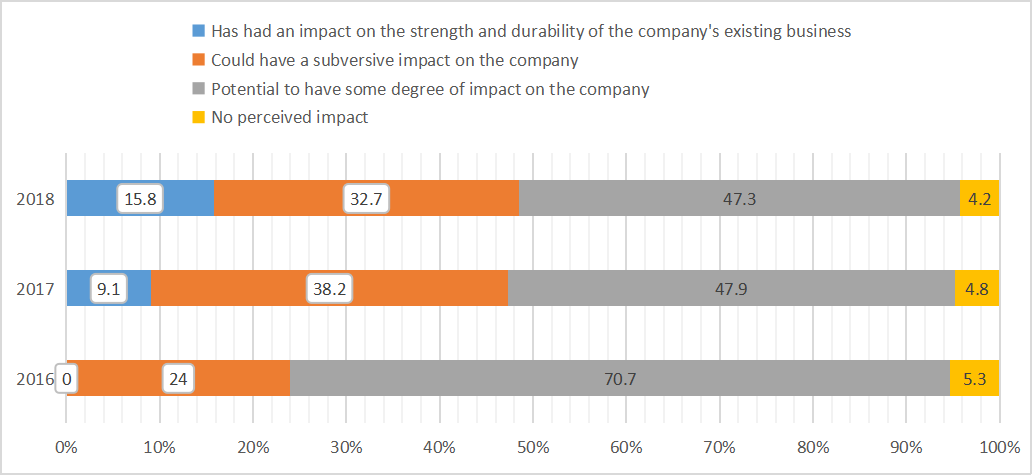
Figure 9: Survey on Japanese people's awareness of the impact of digitization, 2016-2018
According to the data, Japan's digital economy market in 2018 was worth 1.23 trillion dollars, 1.50 trillion dollars in 2019, 2.48 trillion dollars in 2020, and 2.11 trillion US dollars in 2021. Compared with China's data, the growth rate of Japan's digital economy has improved, but it has also fallen back in recent years. It is evident that the synergistic growing advancement of digital industrialization and industrial digitization is an essential component for the scale of the digital economy's advancement. In China, although there is a big gap between the advancement scale of digital industrialization and industrial digitization, they still continue to grow, which further leads to the growth of China's digital economy scale. In Japan, there is still an inevitable advancement gap between the two, and the advancement rates of digital industrialization and industrial digitization show a trend of sometimes rising and then falling, which obviously has a certain negative impact on the advancement of the scale of Japan's digital economy. In addition, through our research on China, we find that the early advancement of digital industrialization has an advantageous effect in fostering the scale of industrial digitization that has not yet been fully developed, but after the vigorous advancement of industrial digitization, industrial digitization often fails to have a similarly positive role in the advancement of digital industrialization scale.
However, in Japan, awareness of the impact of digitization is also increasing, according to the white paper. In the 2018 survey, 15.8 % of respondents answered "already had an impact" on the superiority and durability of their company's existing business, up from 9.1 % the previous year, according to the paper. In addition, 32.7 % said it "could have a disruptive impact." (Figure 9) [7]. As can be observed, Japan has already begun to exhibit signs of industrial digitization and digital industrialization, suggesting that there is still room for growth in Japan's digital economy. That is, the conclusions of this paper may have an influence on how Japan's digital economy develops in the future.
Furthermore, studies have revealed that Japan is building its own digital enterprises through the use of artificial intelligence technology and big data. Komatsu Manufacturing Co., LTD., for example, is promoting a "chain structure" that makes use of all data from construction sites to optimize the entire construction and production process. Similar chain structure promotion might be advantageous to Japan's industrial digitization growth.
Nevertheless, some limitations remain noteworthy because the Japanese government has not published official statistics on the scale of industrial digitization and digital industrialization, and the analysis presented in this article of these data, which makes use of the Chinese standards' computation approach, may have some restriction. Additionally, the majority of the data used for this article span the years 2000 and the present, with a smaller sample size.
References
[1]. China Academy of Information and Communication Research. (2017). White paper on the advancement of China's digital economy.
[2]. Ho, D.A.. (2022). The stage and condition configuration of enterprise digital transformation: A theoretical analysis based on "big data composition". Academic Monthly (04), 38-49. doi:10.19862/j.cnki.xsyk.000396.
[3]. Wang, J.J.. (2023). The advancement of "dualization" and regional comparison of China's digital economy. China Circulation Economy (01), 12-23. doi:10.14089/j.cnki.cn11-3664/f.2023.01.002.
[4]. Wang, D.C. & Wang, J.P.. (2023). The impact of new generation artificial intelligence on the digital economy - A case study of ChatGPT. SAR Practice and Theory (02), 34-39. doi:10.19861/j.cnki.tqsjyll.20230508.004.
[5]. Ministry of Economy, Trade and Industry. (2021). White Paper on Japan's Manufacturing Industry.
[6]. UIBE GVC indicators. RIGVC UIBE,2022, UIBE GVC Database, http://gvcdb.uibe.edu.cn.
[7]. Ministry of Internal Affairs and Communications. (2017). White Paper on Information and Communication in Japan.
[8]. China Academy of Information and Communication Research. (2021). White paper on the advancement of China's digital economy.
[9]. Tian Zheng. (2022). Analysis of the advancement Motivation and Trend of Digital Economy in Japan. Northeast Asian Journal (02), 26-35+146. doi:10.19498/j.cnki.dbyxk.2022.02.003.
[10]. Ministry of Internal Affairs and Communications. (2019). Survey on Economic Analysis of ICT in Fiscal Year 2018.
[11]. Economic and Social Research Institute of the Cabinet Office of Japan. (2020). The Satellite Survey and Research Report on the Digital Economy Er
Cite this article
Zhang,D. (2024). Exploring the Trends of the Relationship Between Digital Industrialization and Industrial Digitization on the Development of Digital Economy ---Take China and Japan as Examples. Advances in Economics, Management and Political Sciences,82,287-294.
Data availability
The datasets used and/or analyzed during the current study will be available from the authors upon reasonable request.
Disclaimer/Publisher's Note
The statements, opinions and data contained in all publications are solely those of the individual author(s) and contributor(s) and not of EWA Publishing and/or the editor(s). EWA Publishing and/or the editor(s) disclaim responsibility for any injury to people or property resulting from any ideas, methods, instructions or products referred to in the content.
About volume
Volume title: Proceedings of the 2nd International Conference on Financial Technology and Business Analysis
© 2024 by the author(s). Licensee EWA Publishing, Oxford, UK. This article is an open access article distributed under the terms and
conditions of the Creative Commons Attribution (CC BY) license. Authors who
publish this series agree to the following terms:
1. Authors retain copyright and grant the series right of first publication with the work simultaneously licensed under a Creative Commons
Attribution License that allows others to share the work with an acknowledgment of the work's authorship and initial publication in this
series.
2. Authors are able to enter into separate, additional contractual arrangements for the non-exclusive distribution of the series's published
version of the work (e.g., post it to an institutional repository or publish it in a book), with an acknowledgment of its initial
publication in this series.
3. Authors are permitted and encouraged to post their work online (e.g., in institutional repositories or on their website) prior to and
during the submission process, as it can lead to productive exchanges, as well as earlier and greater citation of published work (See
Open access policy for details).
References
[1]. China Academy of Information and Communication Research. (2017). White paper on the advancement of China's digital economy.
[2]. Ho, D.A.. (2022). The stage and condition configuration of enterprise digital transformation: A theoretical analysis based on "big data composition". Academic Monthly (04), 38-49. doi:10.19862/j.cnki.xsyk.000396.
[3]. Wang, J.J.. (2023). The advancement of "dualization" and regional comparison of China's digital economy. China Circulation Economy (01), 12-23. doi:10.14089/j.cnki.cn11-3664/f.2023.01.002.
[4]. Wang, D.C. & Wang, J.P.. (2023). The impact of new generation artificial intelligence on the digital economy - A case study of ChatGPT. SAR Practice and Theory (02), 34-39. doi:10.19861/j.cnki.tqsjyll.20230508.004.
[5]. Ministry of Economy, Trade and Industry. (2021). White Paper on Japan's Manufacturing Industry.
[6]. UIBE GVC indicators. RIGVC UIBE,2022, UIBE GVC Database, http://gvcdb.uibe.edu.cn.
[7]. Ministry of Internal Affairs and Communications. (2017). White Paper on Information and Communication in Japan.
[8]. China Academy of Information and Communication Research. (2021). White paper on the advancement of China's digital economy.
[9]. Tian Zheng. (2022). Analysis of the advancement Motivation and Trend of Digital Economy in Japan. Northeast Asian Journal (02), 26-35+146. doi:10.19498/j.cnki.dbyxk.2022.02.003.
[10]. Ministry of Internal Affairs and Communications. (2019). Survey on Economic Analysis of ICT in Fiscal Year 2018.
[11]. Economic and Social Research Institute of the Cabinet Office of Japan. (2020). The Satellite Survey and Research Report on the Digital Economy Er









